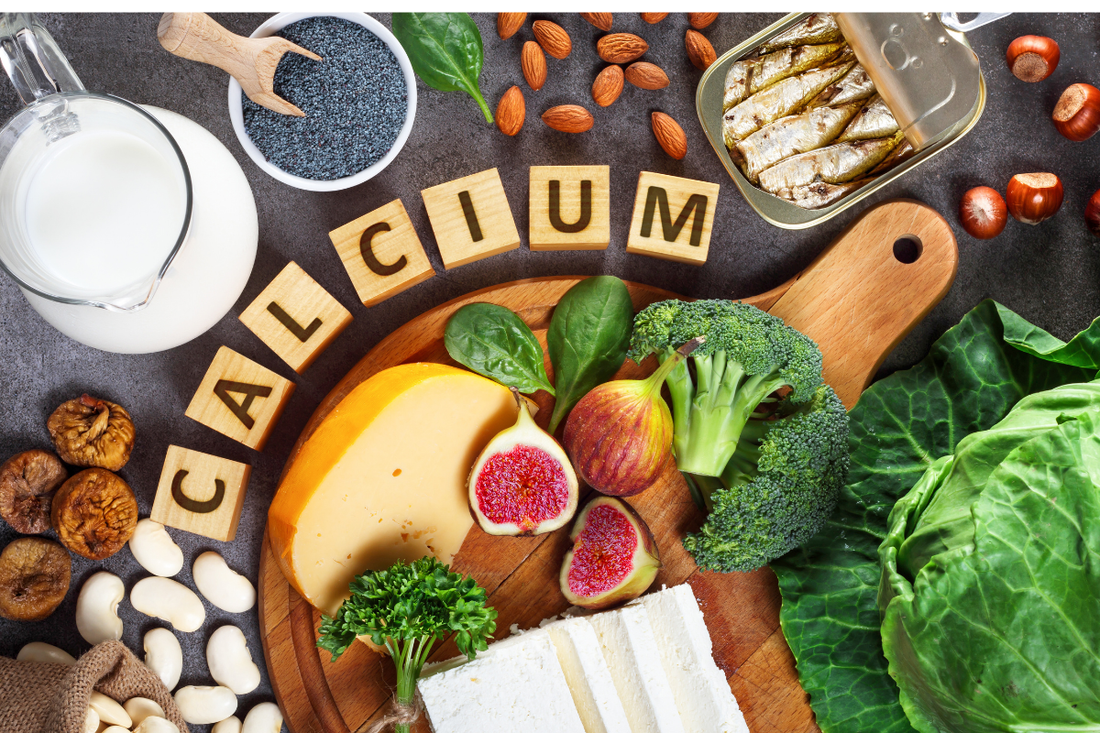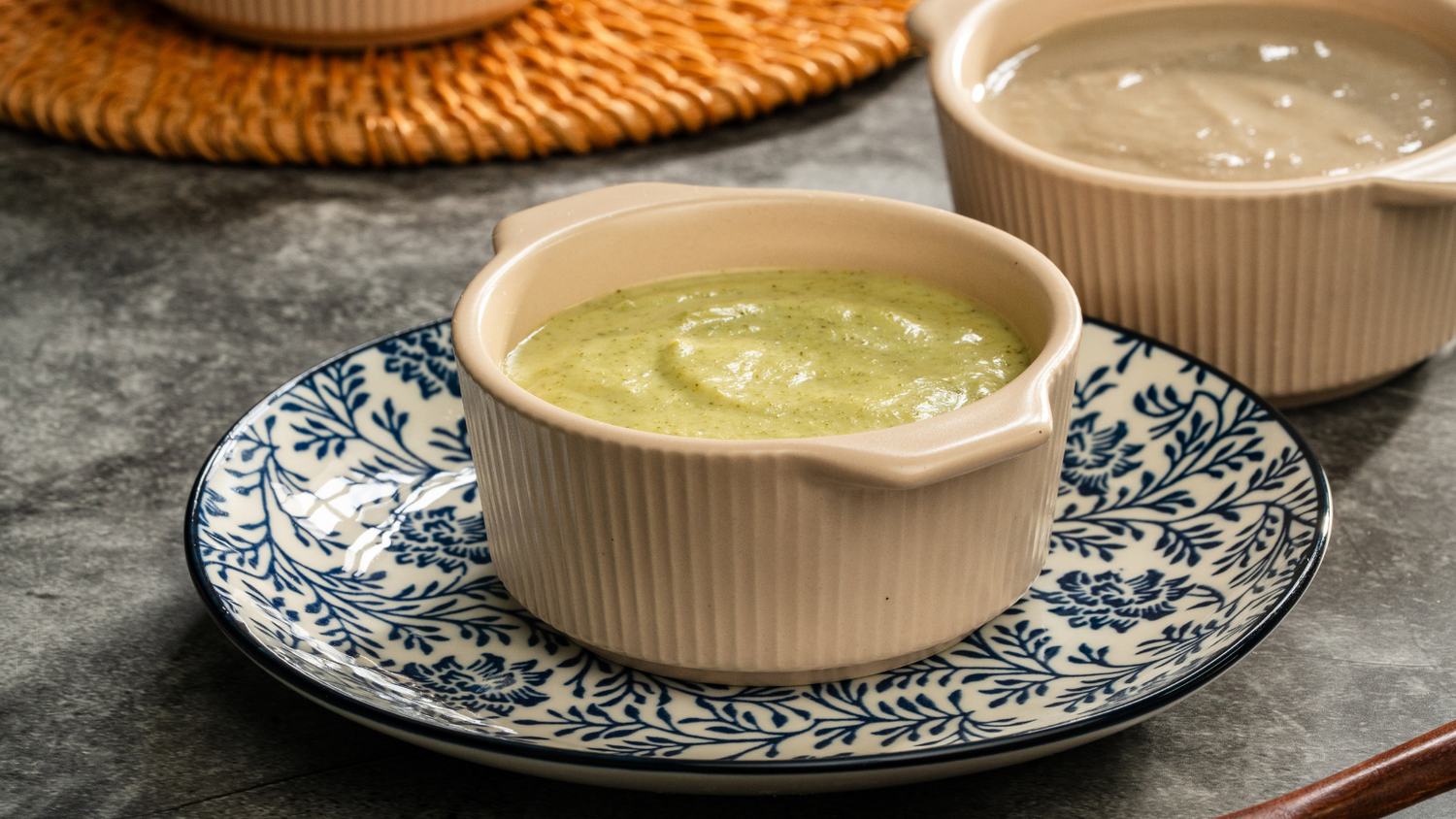Beyond the Glass of Milk
Share
Calcium is often associated with dairy, particularly milk, as the main source for maintaining strong bones and teeth. However, there are many non-dairy foods that provide an excellent source of calcium and other essential nutrients. Incorporating a variety of calcium-rich foods into your diet can benefit not only your bones but also your overall health. Let’s explore the benefits of calcium from broccoli, spinach, cabbage, sardines, and yogurt, and why relying on these alternatives can be a smart choice.
1. Broccoli: A Green Powerhouse of Nutrients
Broccoli is an often-overlooked source of calcium. One cup of cooked broccoli contains about 62 mg of calcium, along with a host of other important nutrients like vitamin C, vitamin K, and fibre.
Why Broccoli is a Great Choice:
- Bone Health: While its calcium content may be lower than dairy, broccoli also contains vitamin K, which plays a key role in bone metabolism and reducing the risk of fractures.
- Anti-Inflammatory Benefits: Broccoli contains antioxidants that reduce inflammation, which benefits not just bone health but overall well-being.
- Digestive Health: Its high fiber content aids digestion, promoting gut health and reducing the risk of certain diseases.
How to Enjoy It: Broccoli is incredibly versatile—roast it, steam it, or toss it into a stir-fry for an easy way to boost your calcium intake.
2. Spinach: Calcium with a Vitamin-Rich Bonus
Spinach, another leafy green, is packed with calcium, offering 99 mg per cup (cooked). However, spinach contains oxalates, which can bind to calcium and reduce absorption. Despite this, spinach remains an excellent source of essential nutrients, making it a valuable part of a balanced diet.
Why Spinach is a Great Choice:
- Rich in Iron: Spinach is one of the best plant-based sources of iron, which is important for producing healthy red blood cells.
- Packed with Antioxidants: It contains high levels of vitamins A and C, as well as flavonoids, which are powerful antioxidants that help fight inflammation and oxidative stress.
- Promotes Eye Health: Spinach is rich in lutein and zeaxanthin, two carotenoids that protect the eyes from damage caused by UV light.
How to Enjoy It: Add spinach to your salads, blend it into smoothies, or sauté it with garlic as a side dish to maximize its nutritional benefits.
3. Cabbage: A Low-Calorie, Calcium-Rich Option
Cabbage, particularly bok choy and Chinese cabbage, offers a surprising amount of calcium, with up to 160 mg per cup (cooked). What’s more, unlike spinach, cabbage doesn’t contain oxalates, meaning its calcium is more easily absorbed by the body.
Why Cabbage is a Great Choice:
- Bone Strength: Cabbage provides calcium and vitamin K, both of which are crucial for bone health.
- Supports Heart Health: This leafy vegetable is high in fiber and contains compounds that can help reduce cholesterol levels and support heart health.
- Cancer-Fighting Properties: Cabbage belongs to the cruciferous vegetable family, which contains glucosinolates—compounds that have been linked to a lower risk of certain cancers.
How to Enjoy It: Whether in stir-fries, soups, or salads, cabbage is easy to incorporate into many meals and provides a light, crunchy texture.
4. Sardines: A Calcium Powerhouse from the Sea
Sardines are one of the most calcium-rich foods you can eat, particularly when eaten with the bones. Just 3 ounces of sardines can provide about 325 mg of calcium—more than what you get from a cup of milk!
Why Sardines are a Great Choice:
- Bone Health: Sardines are not only rich in calcium but also contain vitamin D, which is crucial for calcium absorption and bone health.
- Rich in Omega-3 Fatty Acids: These healthy fats are known for their heart-protective properties, reducing the risk of heart disease and lowering inflammation in the body.
- Brain Health: Omega-3s in sardines also support cognitive function and help protect against age-related mental decline.
How to Enjoy Them: Add sardines to salads, eat them on whole grain toast, or incorporate them into pasta dishes for a savory, calcium-boosting meal.
5. Yogurt: A Probiotic and Calcium-Packed Snack
Yogurt is a traditional calcium source but deserves mention for its versatility and additional health benefits. A cup of yogurt provides about 300–400mg of calcium, and it's also packed with probiotics, which supports gut health.
Why Yogurt is a Great Choice:
- Gut Health: The probiotics in yogurt promote healthy gut bacteria, which can enhance digestion and improve immune function.
- Bone Health: As a high-calcium food, yogurt supports bone density and helps prevent osteoporosis.
- Weight Management: Studies have shown that regular consumption of yogurt can aid in maintaining a healthy weight by promoting satiety and supporting metabolism.
How to Enjoy It: Mix yogurt with fresh fruits, nuts, and seeds for a quick, calcium-rich breakfast or snack. For those avoiding dairy, look for fortified plant-based yogurt alternatives that offer similar levels of calcium.
Why Go Beyond Milk for Calcium?
While milk is an excellent source of calcium, diversifying your calcium intake offers several advantages:
- Nutrient Variety: Foods like broccoli, spinach, cabbage, sardines, and yogurt not only provide calcium but also deliver a wide range of other essential vitamins, minerals, and antioxidants.
- Enhanced Absorption: Different sources of calcium are absorbed at varying rates. For instance, the calcium in broccoli and cabbage is more easily absorbed than the calcium in spinach. By including a variety of calcium-rich foods, you ensure better overall absorption.
- Dietary Flexibility: For people who are lactose intolerant, vegan, or simply prefer to limit dairy, non-dairy calcium sources offer flexibility without compromising nutrition.
- Heart Health: Some non-dairy calcium sources, like sardines and leafy greens, are also rich in heart-healthy nutrients like omega-3s and fiber, contributing to better cardiovascular health.
- Reduced Risk of Osteoporosis: A diverse diet that includes multiple sources of calcium supports stronger bones and reduces the risk of osteoporosis, particularly in older adults.
Incorporating calcium from different sources, such as broccoli, spinach, cabbage, sardines, and yogurt, ensures that your body receives this essential mineral while enjoying a range of flavors and health benefits. These foods provide much more than just calcium—they support heart health, brain function, digestion, and bone strength. By going beyond milk and including a variety of calcium-rich foods in your daily meals, you can nourish your body with a broader spectrum of nutrients while still meeting your calcium needs.





